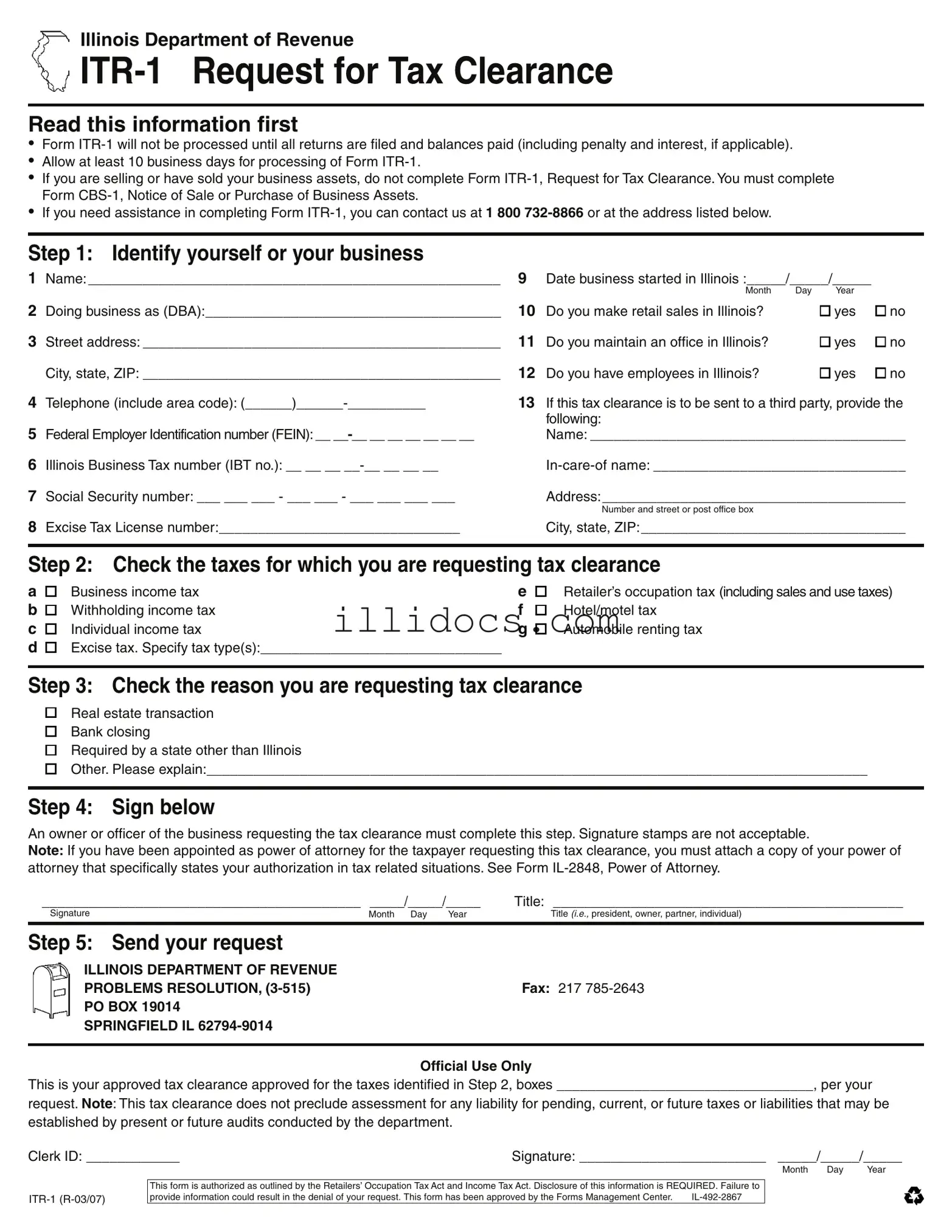What is the purpose of the ITR-1 form?
The ITR-1 form is used to request tax clearance from the Illinois Department of Revenue. It confirms that all tax returns have been filed and all balances, including any penalties and interest, have been paid. This form is often necessary when selling business assets or completing real estate transactions.
Who needs to file the ITR-1 form?
This form must be completed by business owners or officers seeking tax clearance. If you are selling or have sold business assets, you should use Form CBS-1 instead. It is essential for those who need to prove their tax compliance for transactions such as real estate sales or bank closings.
How long does it take to process the ITR-1 form?
Processing the ITR-1 form typically takes at least 10 business days. It is important to allow this time frame when planning any transactions that require tax clearance.
What should I do if I need help completing the ITR-1 form?
If you require assistance while filling out the ITR-1 form, you can contact the Illinois Department of Revenue at 1-800-732-8866. They can provide guidance and answer any questions you may have about the form or the process.
What information do I need to provide on the ITR-1 form?
You will need to provide various details, including your name, business name (DBA), address, contact information, and tax identification numbers. Additionally, you must indicate the types of taxes for which you are requesting clearance and the reason for your request.
Can I send the ITR-1 form to someone else?
Yes, if you want the tax clearance to be sent to a third party, you must provide their name and address on the form. Ensure that the third party is authorized to receive this information on your behalf.
What happens if I do not provide all the required information?
Failure to provide complete and accurate information on the ITR-1 form may result in the denial of your request for tax clearance. It is crucial to ensure that all fields are filled out correctly to avoid delays in processing.
